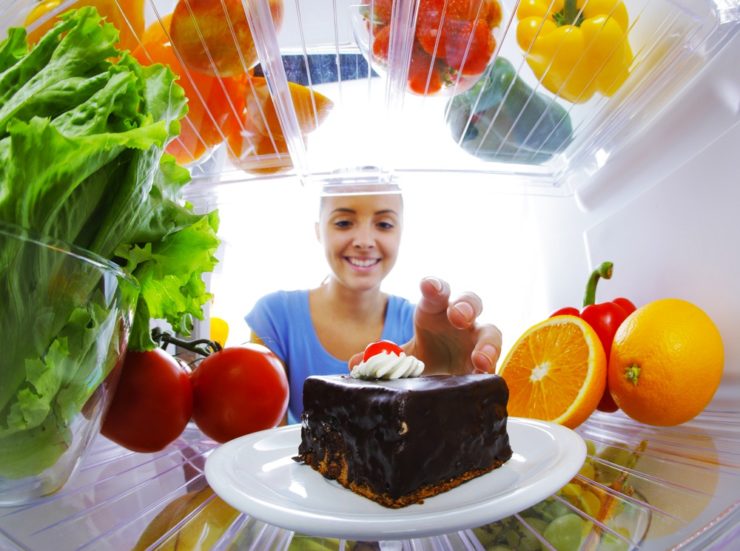Moms get plenty of practice filling the family fridge, but are you stocking it right? Studio 5 Contributor, Teresa Hunsaker, says it’s time to re-think how you use your refrigerator. Try her method to help keep food fresh, longer.
Are your leftovers starting to develop lives of their own? Ever get frustrated with how much food you waste from a disorganized refrigerator? Do you find yourself buying some food items only to find you already had them in the fridge? Have you ever kicked yourself when you have the considered the cost of the food waste from a neglected fridge?
A trip to the supermarket can be expensive, so we want the food to last as long as possible. Let’s look at some tools to help you get a clean and organized fridge…
INVENTORY
The very first step in saving money by storing food better is to take inventory of what you have in the refrigerator, and what needs to be thrown away…outdated, spoiled, not likely to use again.
Ø Round up a heavy duty plastic garbage bag and line a box with it. Then, as you go through and inventory you can readily throw appropriate items away.
Ø Keep a notepad close by to write ideas for organization , questions for shelf life, or container needs noted.
FOOD SAFETY
Once you have inventoried, and before you further organize, the second step is to keep the temperature zones of the fridge in mind. Most folks do not realize that there are “mini-zones” in the refrigerator, and they have different temperatures. One of the best things you can do is to place a thermometer at different parts of the refrigerator (front and back of each shelf) and record the temps…then you will know your refrigerator and it’s tendencies. Here are some things to keep in mind based on general observations:
Ø Top part of fridge is often the warmest (warmer air rises)…juice, soda, etc. Not milk.
Ø Middle shelf is the most consistent temperature. Most produce will also do well here…especially cold sensitive fruits or veggies. Beverages like soda also do well here, and so do herbs. This part of the refrigerator is also a good place for leftovers and eggs.
Ø Door is the warmest part…condiments like salad dressings, ketchup, mustard, pickles, salsa, as well as butter, cheese, and nut oils, etc.
Ø Crisper drawers are specifically designed (at least in most refrigerators) to maintain and retain some humidity…so they are great for leafy veggies, broccoli, and some cheeses.
Ø The bottom part of the refrigerator is the coldest…great place to keep meats…poultry, roasts, etc, and dairy. Use the meat drawer for your cooked meats…especially your sandwich meats, cold cuts, bacon.
Ø Keep raw meat in the lowest shelf of the refrigerator to avoid cross contamination if it drips from the packaging.
Ø Get a thermometer for the refrigerator…keep fridge control cold enough to be consistently between 37-40°F.
Ø Consider cleaning your fridge out at least once a month and using a mild disinfecting solution…either bleach (2 TBS. to a quart of water), or vinegar mixed with water (1 cup mixed with 3 cups water). Consider purging your refrigerator every couple of weeks. Think about what we are putting into our fridge…vegetables and fruits that could carry many micro-organisms, raw meats, and eggs. The two biggest culprits for food borne illness are undercooking and cross contamination.
ORGANIZE
The third step is to consider some basic organizing strategies. Here are just a few:
Ø Keep the most often used items closest to the front, so you can reach and see easily.
Ø Keep some foods on a lazy Susan…yes, even in the refrigerator these can be helpful…for things like condiments or yogurt.
Ø Don’t mix veggies and fruits in your crisper drawers…most veggies do best in a high humidity drawer, and oh, do not wash until ready to use. Fruits go in a low humidity drawer. Fruits give off gases that break down veggies faster.
Ø Look for containers or organizers that maximize shelf space…square containers are typically best.
Ø Consider containerizing (is that a word?)” like” things together….dairy (sour cream, yogurt, cottage cheese, etc.), meats, etc. Or, if not in containers, consider having “sections” or “zones” in the fridge for “like” items…a certain shelf for all leftovers, or a bin for snack foods, etc.
Ø If you have more condiments then door space, consider placing the most frequently used condiments on the door for easy access, then placing the others towards the back on the lower shelves…perhaps even in a small bin…that way, when needed, they can be pulled out all together for an “easy find” of the one you need.
Ø Keep fresh eggs in the container they came in. They will have a longer shelf life if you keep them there, rather than in the refrigerator egg holder.
Ø If you buy butter in bulk, keep only a few sticks in the refrigerator and freeze the rest.
Ø Remember to label food items that are not in their original container, or are leftovers…date and item on the label. Consider the FIFO theory…first in first out…so keep foods that need to be used first towards the front.
Tote with handle: Walmart…$3
Lazy Susan with gripper matt: Bed Bath And Beyond…..$8
Canned drinks dispenser: Bed Bath and Beyond…$8, or Walmart…$6
Square Juice Jug: Walmart…$3
Clear Stackable Tote (heavy duty): Bed Bath and Beyond…$12
Thermometer for Fridge: Bed Bath and Beyond…$6
References and Resources:
IKEA
Bed Bath and Beyond
Rachael Ray show
USDA
If you have any questions, contact Teresa Hunsaker at the Family and Consumer Science Education Department at the Weber County USU Extension office at (801) 399-8203 or online at www.extension.usu.edu/weber















Add comment